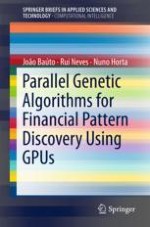2018 | Book
Parallel Genetic Algorithms for Financial Pattern Discovery Using GPUs
Authors: Dr. João Baúto, Prof. Rui Neves, Prof. Nuno Horta
Publisher: Springer International Publishing
Book Series : SpringerBriefs in Applied Sciences and Technology
